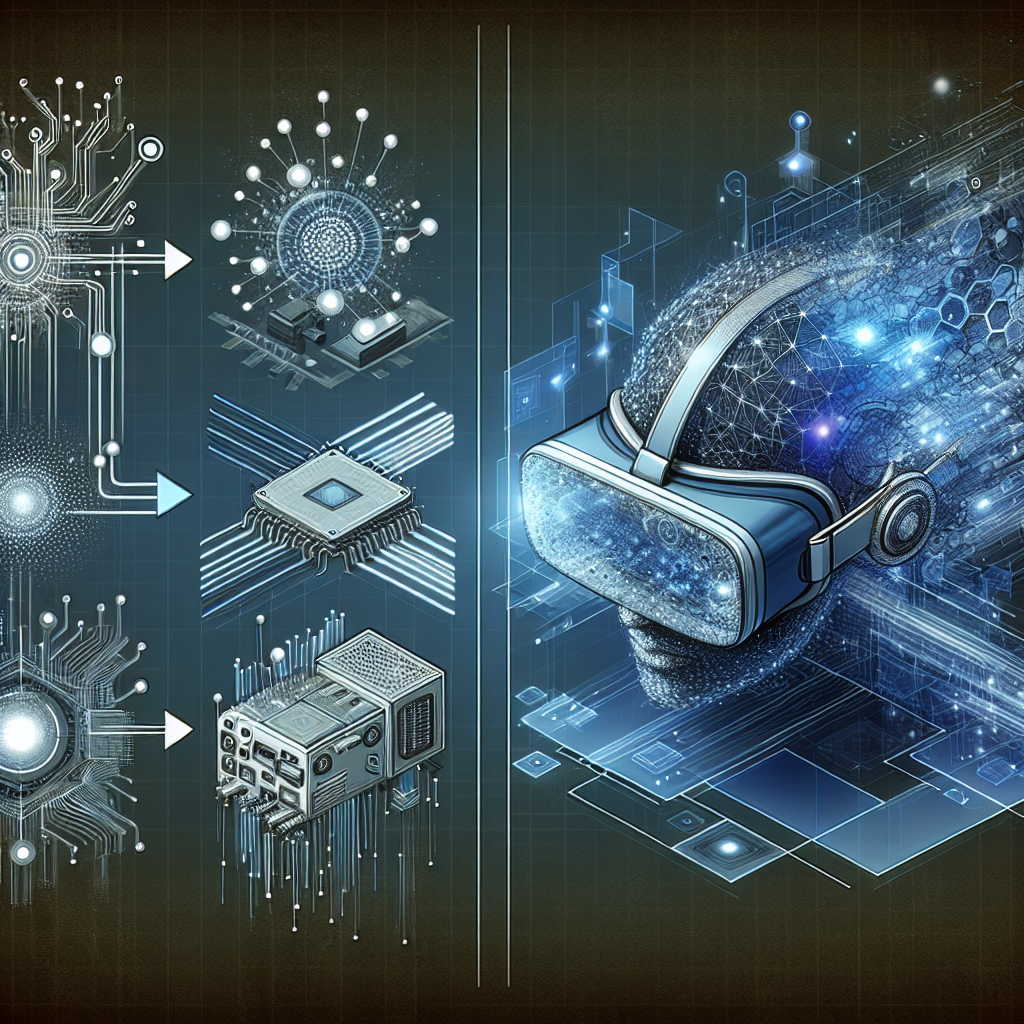The Role of Generative AI in Virtual Reality Development
Virtual reality (VR) technology has made significant advancements in recent years, providing users with immersive and interactive experiences that were once only possible in science fiction. One of the key components driving this progress is generative artificial intelligence (AI), which plays a crucial role in creating realistic virtual environments and enhancing the overall user experience.
Generative AI, also known as generative adversarial networks (GANs), is a type of AI that can generate new data based on patterns and examples from existing data sets. In the context of VR development, generative AI can be used to create lifelike characters, landscapes, and objects that enhance the overall realism and immersion of virtual environments.
One of the primary ways that generative AI is used in VR development is through the creation of realistic 3D models. Traditionally, creating detailed 3D models for VR environments was a time-consuming and labor-intensive process, requiring skilled artists and designers to manually create each object and texture. With generative AI, developers can use algorithms to generate 3D models based on existing data sets, significantly reducing the time and resources required to create immersive virtual environments.
Generative AI can also be used to enhance the interactivity of VR experiences by creating dynamic and responsive virtual characters. By using algorithms to generate realistic behaviors and responses, developers can create virtual characters that can interact with users in lifelike ways, enhancing the overall immersion and engagement of the VR experience.
In addition to creating lifelike characters and environments, generative AI can also be used to generate realistic soundscapes and music for VR experiences. By analyzing existing audio data sets, AI algorithms can create unique and dynamic soundtracks that adapt to the user’s actions and interactions in the virtual environment, enhancing the overall sensory experience of VR.
Furthermore, generative AI can be used to optimize and streamline the development process of VR experiences. By automating tasks such as texture generation, lighting optimization, and object placement, developers can focus more on creative design and storytelling, resulting in more engaging and immersive VR experiences.
Overall, generative AI plays a crucial role in the development of virtual reality experiences by creating realistic environments, characters, and interactions that enhance the overall immersion and engagement of users. As VR technology continues to evolve, the role of generative AI will become even more important in creating truly immersive and interactive virtual experiences.
FAQs:
Q: How does generative AI differ from traditional AI in VR development?
A: Traditional AI in VR development focuses on creating predefined behaviors and responses for virtual characters and environments. Generative AI, on the other hand, uses algorithms to generate new data based on existing patterns and examples, allowing for the creation of realistic and dynamic virtual environments.
Q: What are some of the challenges of using generative AI in VR development?
A: One of the challenges of using generative AI in VR development is ensuring that the generated content is realistic and coherent with the overall virtual environment. Additionally, training AI algorithms to generate high-quality 3D models and textures can be computationally intensive and time-consuming.
Q: How can generative AI enhance the user experience in VR?
A: Generative AI can enhance the user experience in VR by creating realistic environments, characters, and interactions that enhance immersion and engagement. By generating lifelike behaviors and responses, AI algorithms can create dynamic and interactive virtual experiences that feel more realistic and engaging to users.
Q: What are some examples of generative AI applications in VR development?
A: Some examples of generative AI applications in VR development include the creation of realistic 3D models, dynamic virtual characters, interactive soundscapes, and optimized development processes. Generative AI can also be used to enhance the overall visual and auditory quality of VR experiences, creating more immersive and engaging virtual environments.

